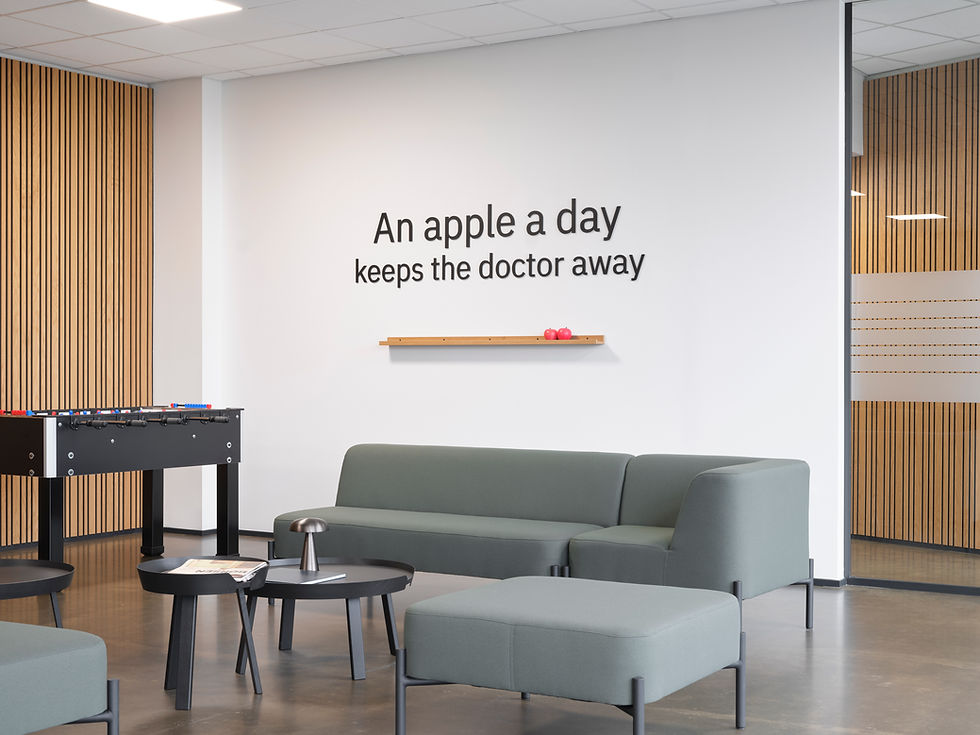DESIGN SPACES OF THE FUTURE
- MODUS

- Aug 6, 2024
- 3 min read
In a constantly changing world, it is about the ability to observe, analyze and be ready for change. Our needs and behavior have changed and will change in the future as well - and you have to be prepared for that. We have come up with 4 proposals for what the design spaces of the future will revolve around.

Relationships and connections
We experience an increasing need for deeper relationships and connections with each other and our surroundings. Design that awakens the emotions and engages our senses is not just a trend, but an essential factor that helps us interact with a physical space. Anchoring to the physical space happens when we feel connected and when we feel 'we belong'. The design must therefore speak to us and awaken our memories. This can be done, among other things, through special design language, choice of materials or a special scent that awakens the emotions and strengthens the connection between people and space.
Flexibility
The impact of the corona epidemic and the associated shutdowns is still infiltrating our society. Our online presence was strengthened and the flexibility in our work, education and everyday life increased. This is something we have taken forward post corona. Flexibility is something we care about, something that simplifies everyday life and optimizes aspects of life. Another way flexibility can also be used to advantage is through the physical space. Through flexible designs and solutions, spaces can be created anew and our experiences changed. This can be done through elements such as partitions that can change the layout of the office, flexible podium layouts in the store that can change the look through add-ons, or light furniture in the clinic's waiting room, which can create a breath of fresh air in the room by rearranging. By creating spaces that are flexible, you can constantly create new experiences.
Technology and AI
When talking about the future, it is difficult to avoid technology and especially AI, which has really gained ground in recent years. Artificial intelligence has rolled out in society as a tool that can perform complex as well as simpler tasks. The technology will only become more complex and appear in more places, and it is therefore essential to be able to handle it correctly. The link between the digital and the physical must be uncomplicated and ensure uniform experiences regardless of space, and this can be done through technology. Through elements such as chatbots, qr codes and screens, you can create experiences across the platforms that are synergetic.
Sustainability
Sustainability is no longer just a trend. It is a fundamental factor in our society that affects our behavior and the choices we make. Sustainability has branched out into our world and requires us to incorporate greener initiatives. One way to do this is through interior design and design. Through a conscious choice of elements, fixtures and materials, you can create spaces that not only speak to the aesthetics, but also accommodate a more sustainable lifestyle. One way MODUS has worked with sustainability is through our 'creative box' which forms the framework for our work and creative space. In the process, we had a big focus on upcycling, choice of materials and flexibility and how we could create an office with few resources that accommodated the good working environment. See more about the project here: https://www.modus.dk/baeredygtigt-pop-up-kontor .
At MODUS, we always have our finger on the pulse of what is happening in the design industry. We approach all projects with the approach of creating space design that meets the user, the needs and the future. We create designs that strengthen the relationship, accommodate flexibility, involve technology and protect a greener world.



Comments